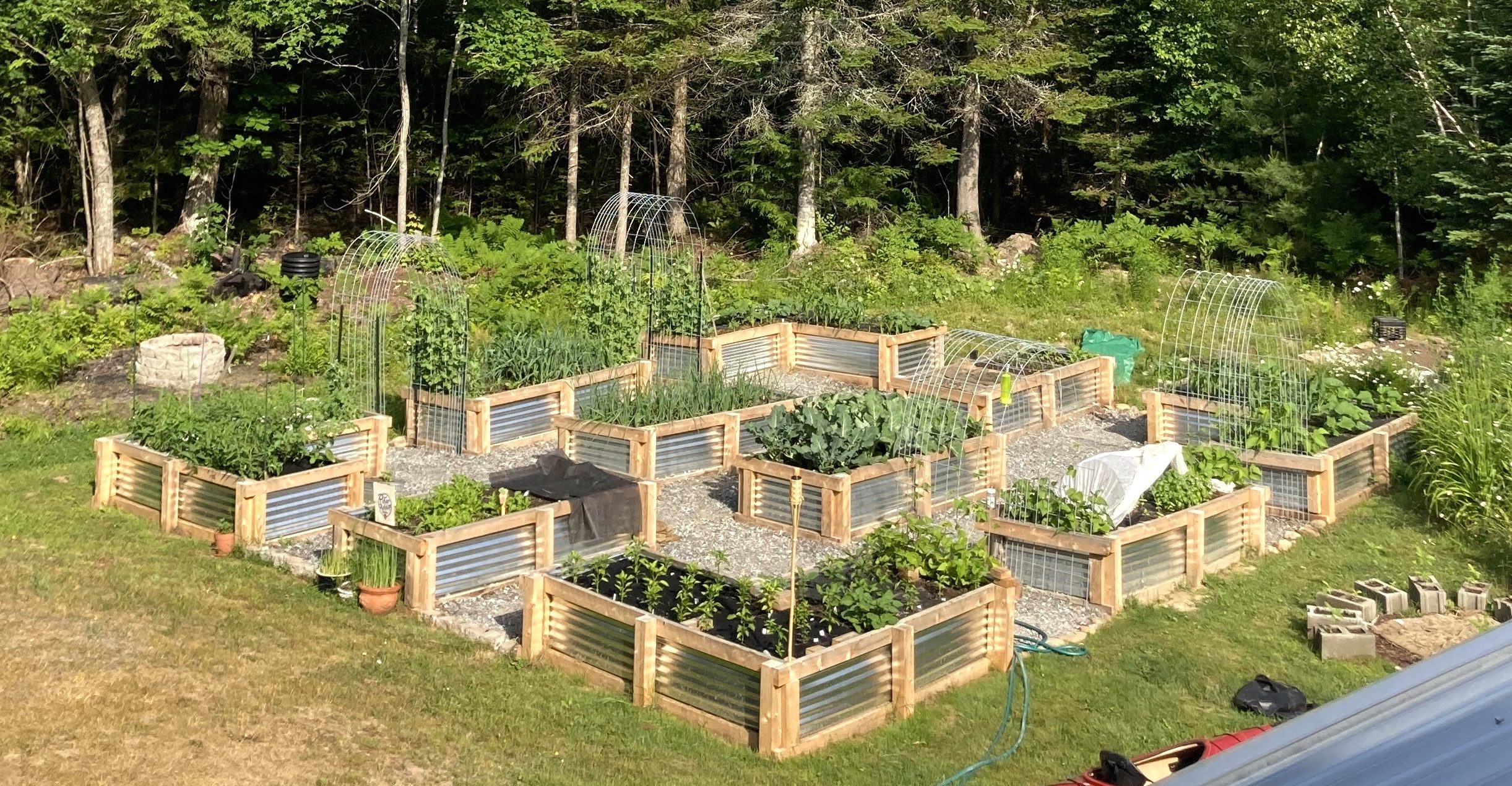A growing trend
Victory gardens and community farming show small plots can reap a bounty.
By Amy Paradysz

As Americans poise for a return to ‘normalcy’ by the Fourth of July, for many of us the new normal comes with bigger gardens.
Tanya Dunton of Herman joined a Facebook group for victory gardeners last year and, with her husband and two teenage sons, grew food where there had previously been lawn.
“We thought it would be a good time to show them how to make it on our own,” she says. “My parents always gardened, and my mom used to can, and I could ask her for help—or there’s good ol’ Google.”
Cooperative Extension offices guided the World War II generation with flyers like “A Victory Garden for a Family of Five on a Plot 25 x 50 ft.” All these years later, first-time gardeners are again turning to the University of Maine Cooperative Extension—this time with questions about soil testing, managing weeds and, yes, how to plant a garden to feed a family of five. In response, the Cooperative Extension has released a video series called “Victory Gardens for ME” and a Food Preservation Webinar series.
“The term ‘victory garden’ originally came from a time when everyone was encouraged to pull together and do their part,” says Becca Long of the University of Maine Cooperative Extension. “And I think that really speaks to us again.”
During World War I—which overlapped with the Spanish flu pandemic of 1918—Americans pitched in to alleviate food shortages by growing victory gardens. Then, during World War II, with nearly one-quarter of America’s food supply going to soldiers, the government put rations on sugar, butter, milk, cheese, eggs, coffee, meat and canned goods. By 1943, some 20 million victory gardens were producing 40 percent of all vegetables consumed in the United States.
“Whatever you could grow in your own yard, you could eat,” says Cynthia Walker, executive director of The Brick Store Museum, which has a victory garden on Main Street in Kennebunk.

A history-inspired Victory Garden sign at the Brick Store Museum in Kennebunk. Photo by Amy Paradysz.

Not exclusive to private yards, World War II victory gardens sprang up in vacant city lots and on school grounds, in window boxes and on rooftops, on the White House lawn, and in Boston’s Fenway. These were the precursor to today’s community gardens, where plot holders grow food for themselves and their families—as well as contribute to their community’s food security.
Leslie Lindgren directs the Kennebunk Community Garden, which has 78 plots—most of them reserved for the season—and has donated nearly 41,000 pounds of produce to food pantries since 2009.
“People were anxious to get their hands in the soil again this year,” she says. “It’s going back to our roots. It’s wanting to have some security. It’s simplification. It’s a desire to stay busy. And, if you can’t connect with people, you can connect with the earth.”
John Gibbons, who lives in a condo and can’t grow vegetables at home, fits a whole lot in the 10-foot by 20-foot plot he rents each season for $75. Garlic. Strawberries. Corn. Broccoli. Tomatoes, Peppers. Sunflowers. And, of course, cucumbers for his bread-and-butter pickles. He’s among the Kennebunk Community Gardeners who, together, donate thousands of pounds of produce to Community Outreach Services in Kennebunk each summer with any excess going to the York County Shelter in Alfred.

With planning and a great deal of work, a bounty can come from a small patch of dirt. Liberation Farms, the community farming program of the Somali Bantu Community Association, distributes 1/10-acre plots in Lewiston and Auburn for 220 immigrants to grow food for their families.
“We have fled violence, kidnapping and rape in Somali,” says Muhidin Libah, director of the Somali Bantu Community Association. “Here, farming, this is the most peace we can have.”

Many of the new Mainers grow what reminds them of home—including Somali flint corn, which is dried and ground into cornmeal used for mufo (flatbread) and soor (porridge). Thirty of the Somali Bantu farmers also cooperatively grow produce for sale: greens for Lewiston and Auburn Public Schools, flint corn for Maine Grain’s Liberation Farms cornmeal, and hardy Maine staples like cabbage, carrots, and onions for six food pantries through Good Shepherd Food Bank’s Mainers Feeding Mainers program.
During the drought of the summer of 2020 when unemployment and food pantry use was high, the amount of produce that Good Shepherd was able to buy from its 80 farm partners decreased by about a quarter of a million pounds.

But the nonprofit also accepts donations from gardeners just overrun with zucchini. Or tomatoes. Or rhubarb. And in 2020 they received approximately 362,000 pounds of donated produce from home and community gardens grown on plots of land less smaller than 2 acres. That’s more than 3.7 pounds per Mainer, just from victory garden-size plots.
Amy Paradysz is a freelance writer and history fan from Scarborough who likes the idea of gardening better than actually gardening.
Article last updated on: 05/04/2021







